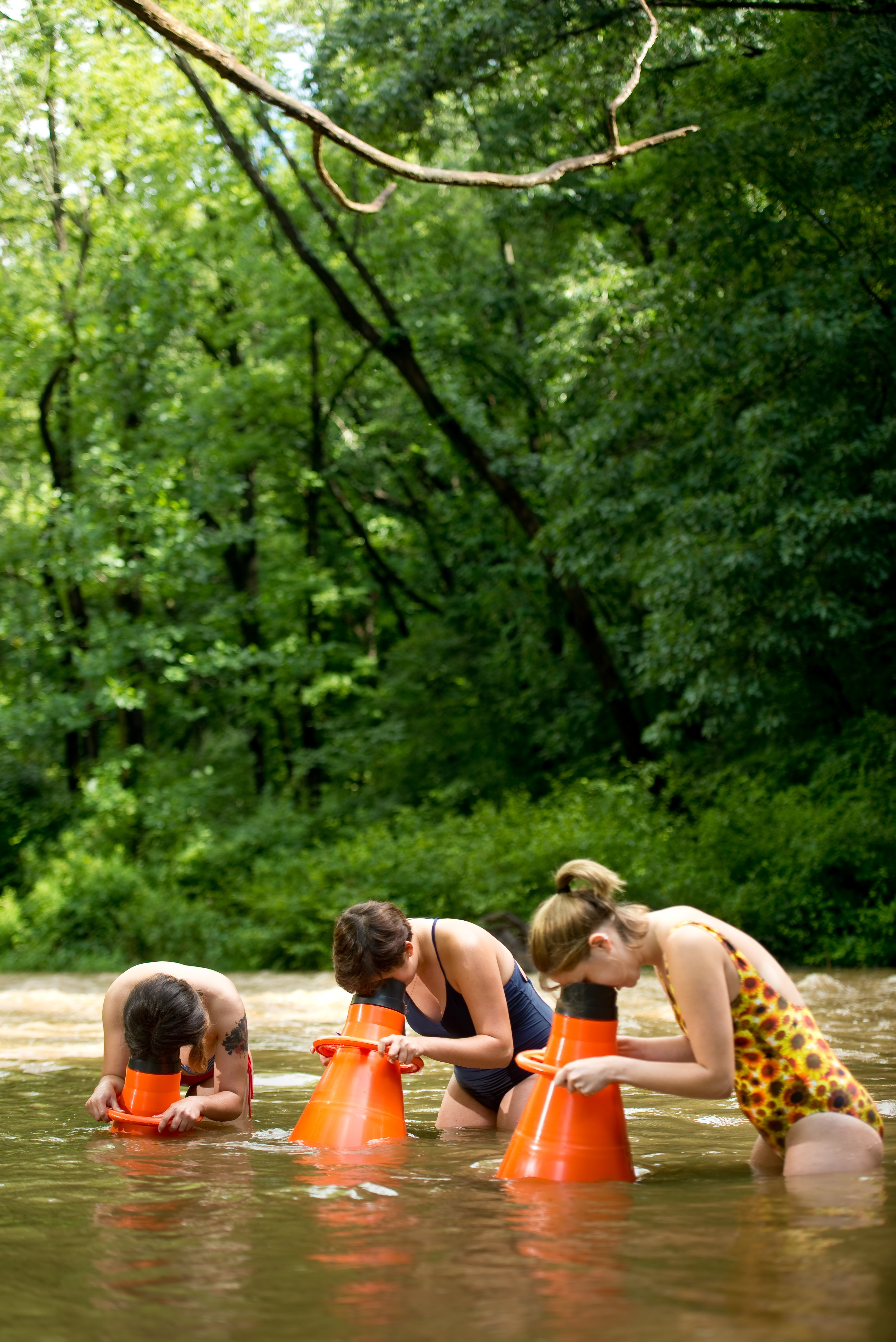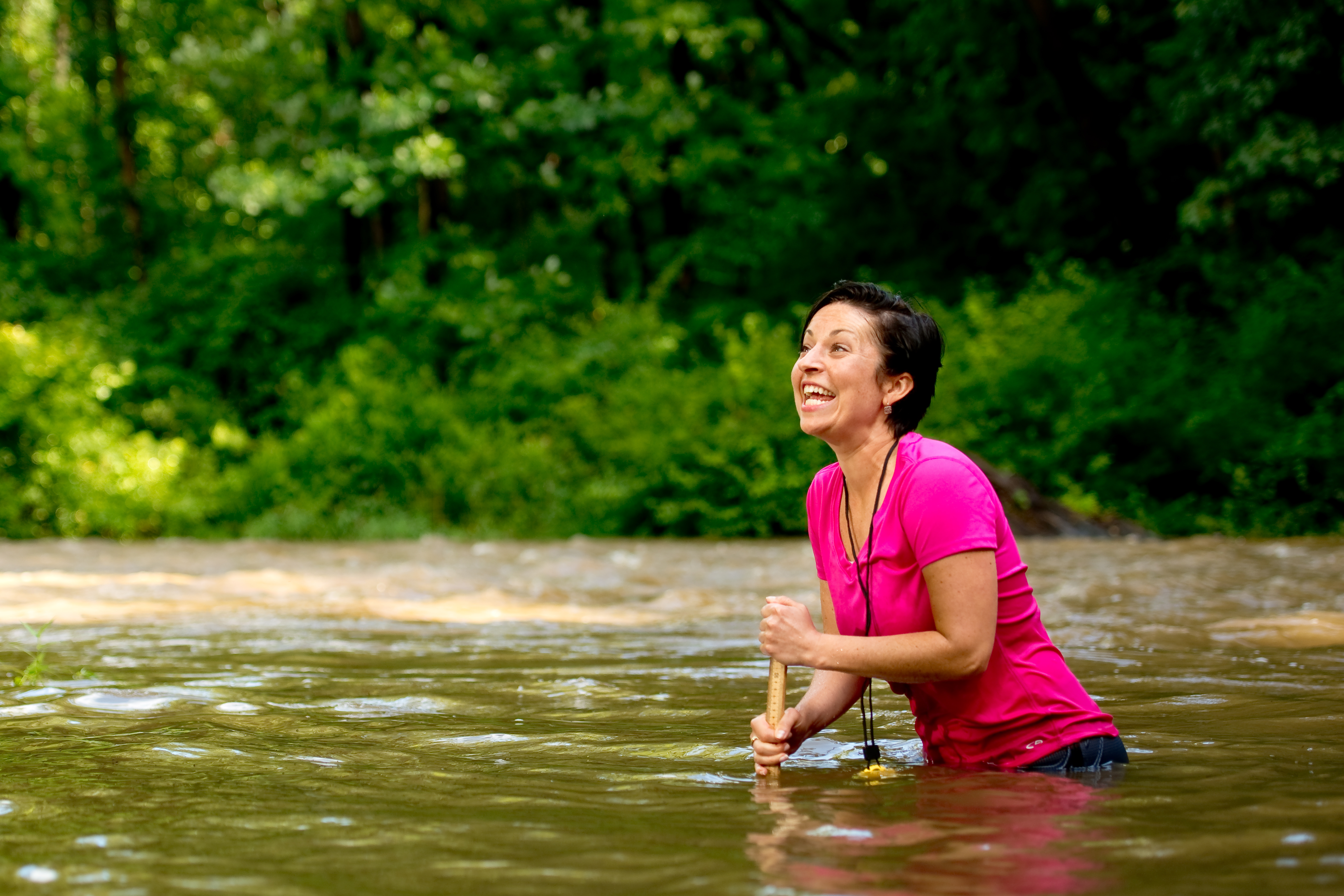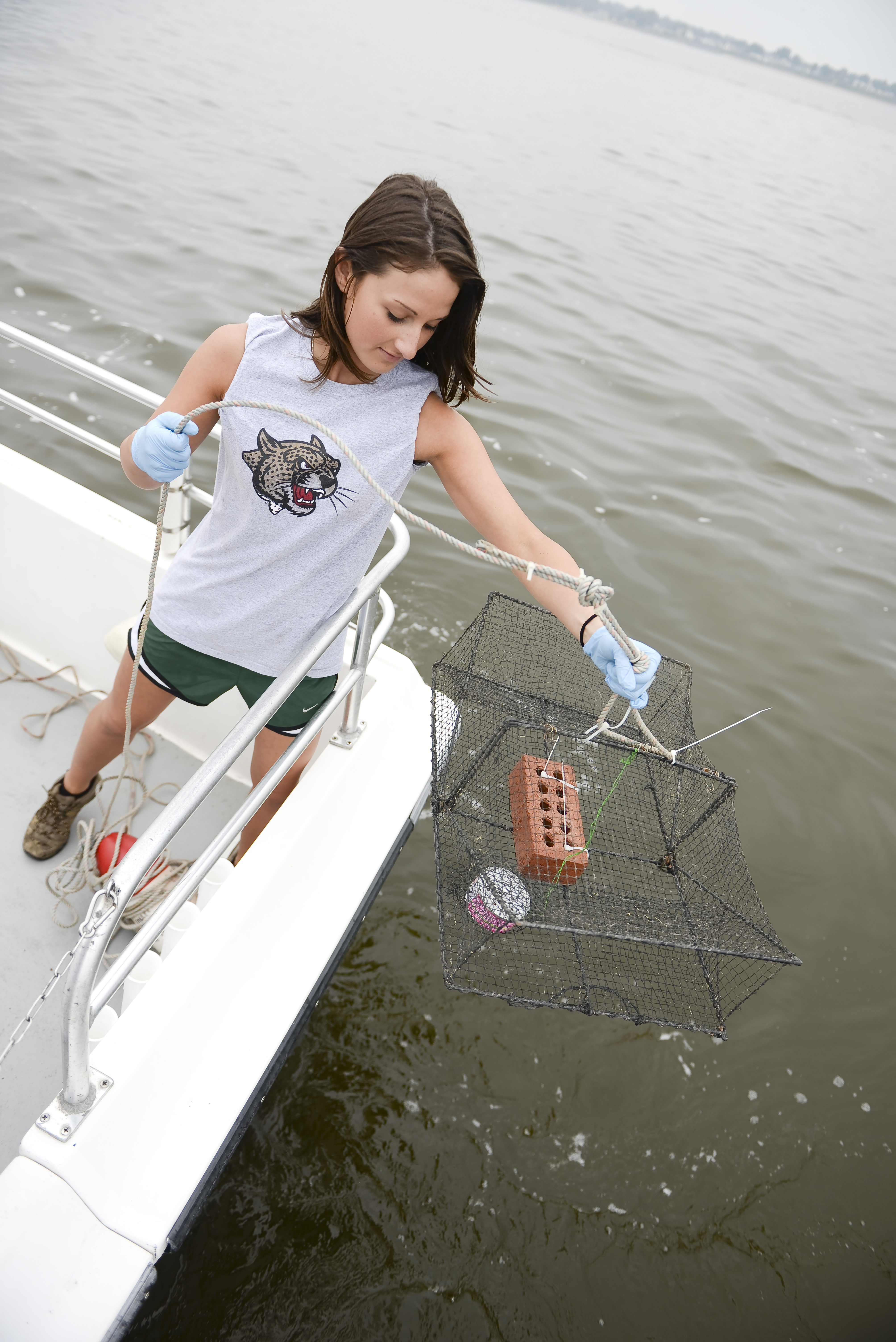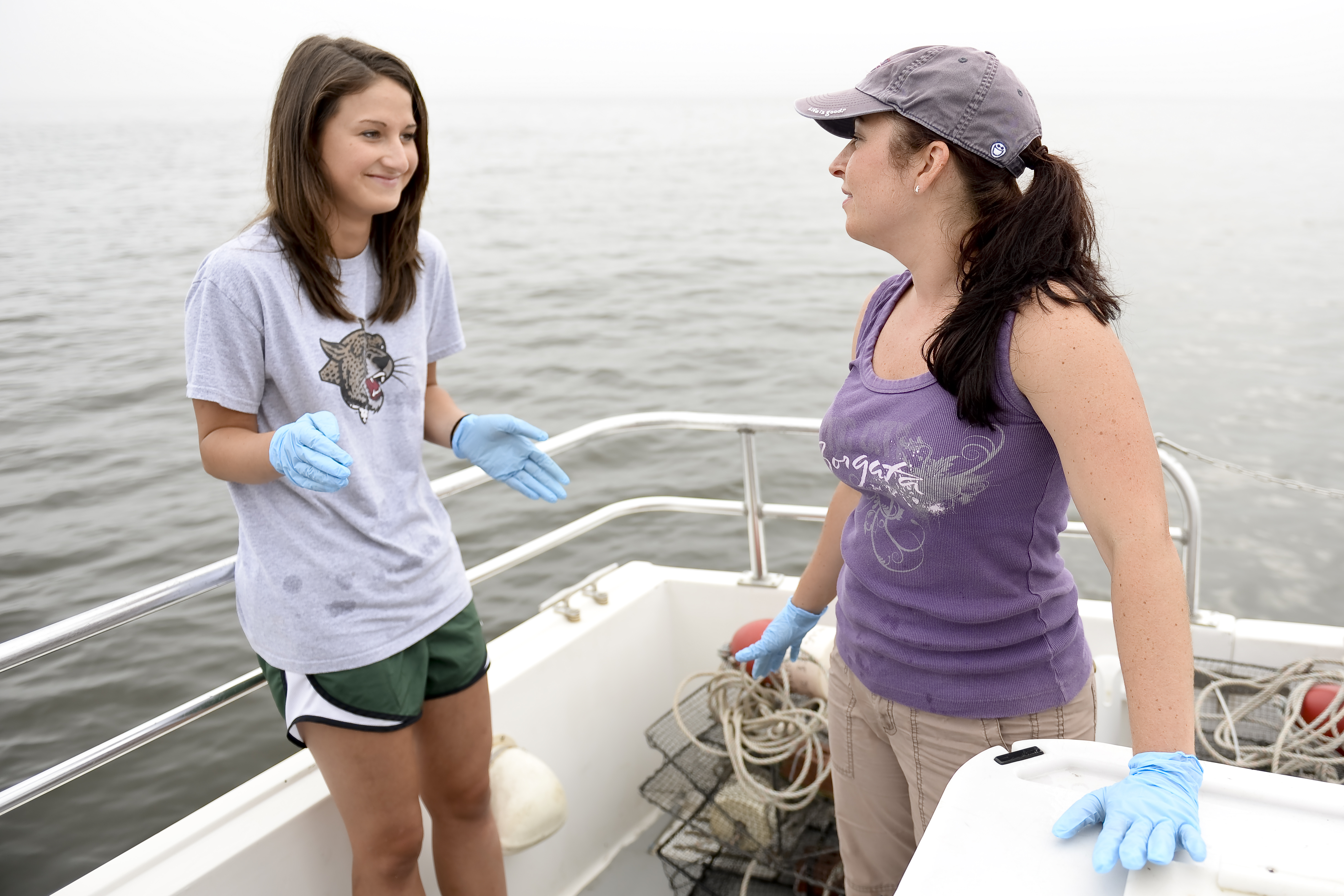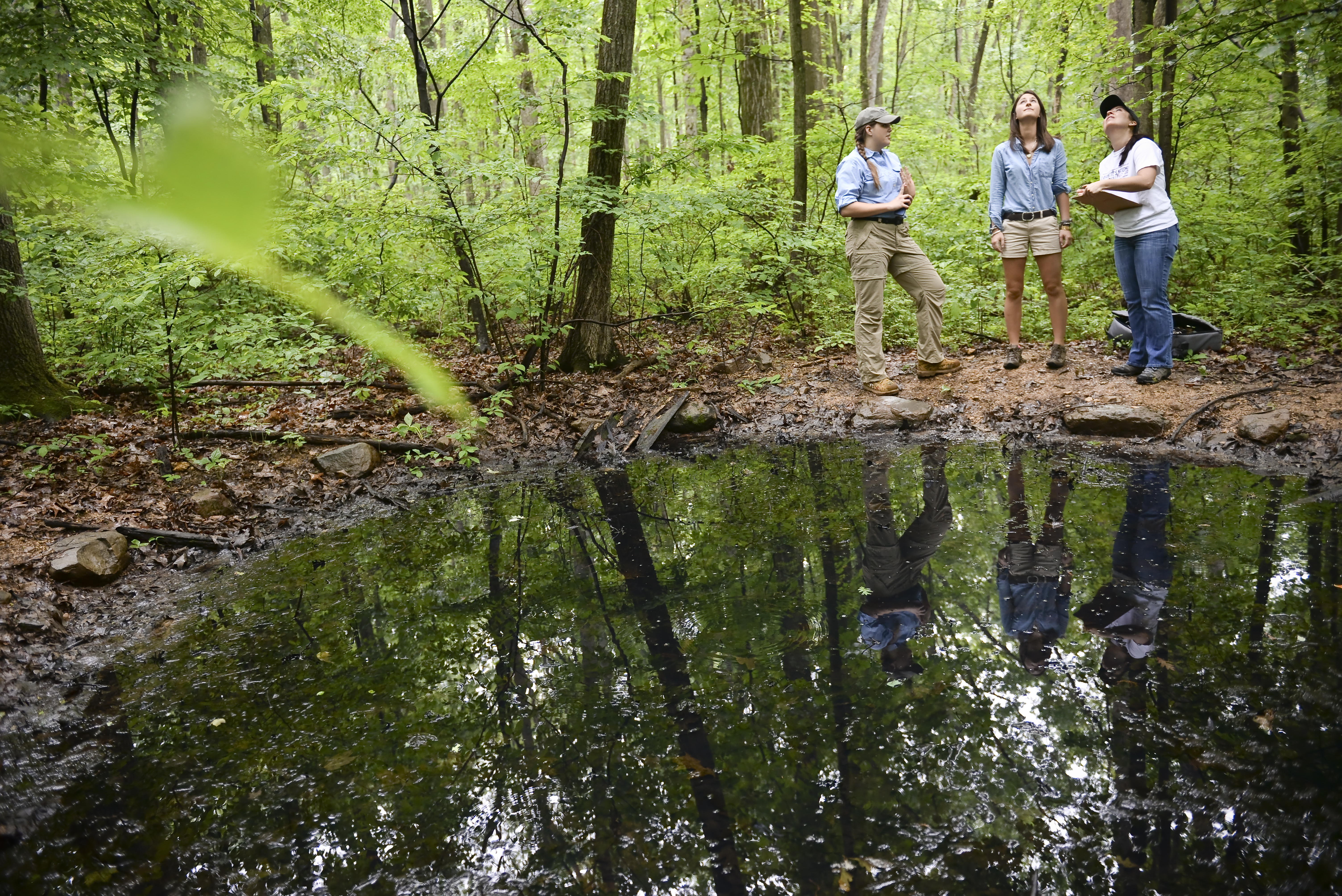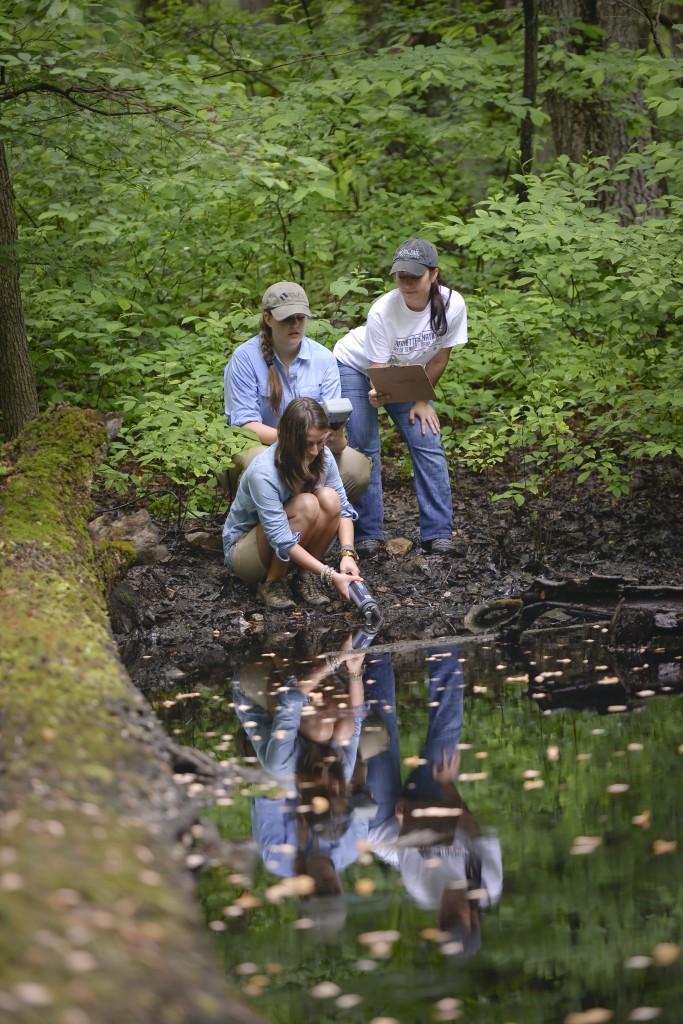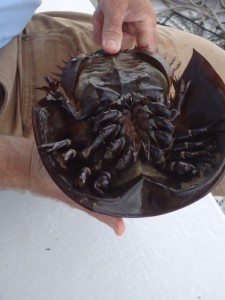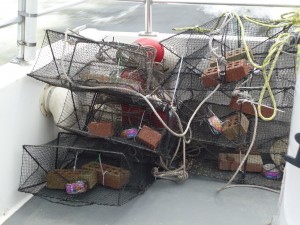Lab family has been involved in pre-restoration monitoring in the Bushkill Creek since 2010 ever since we learned about the Natural Resource Damage Settlement which would fund both dam removals and freshwater mussel reintroduction. The litigation and planning process took well over a decade, but restoration is now underway. Dam 5 was removed in September 2021. Dams 1 and 3 were removed in summer 2023. Dam 2 was removed in June 2024, and we introduced two species of native freshwater mussels to newly reconnected portions of Bushkill Creek on June 27th, 2024. Below are photos of Lab Fam and Summer EXCEL student, Eurnett Christopher ’25, helping with mussel reintroduction and monitoring. The 4th dam is slated to be removed in summer 2025.
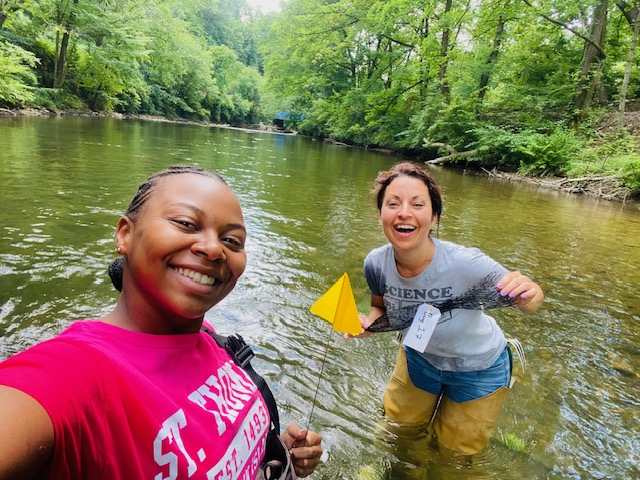



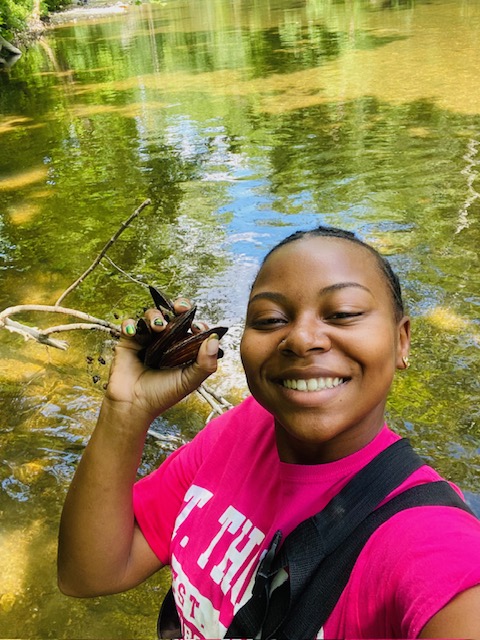

Category Archives: Research News
Dams 1, 3, and 5 gone and more to go!
THE BUSHKILL CREEK DAMS ARE FINALLY BEING REMOVED! Read more here.
Summer 2017 Research
Over the past 10 weeks, my Excel and Nalven scholars have been busy working on some exciting field projects in conservation biology and restoration ecology.
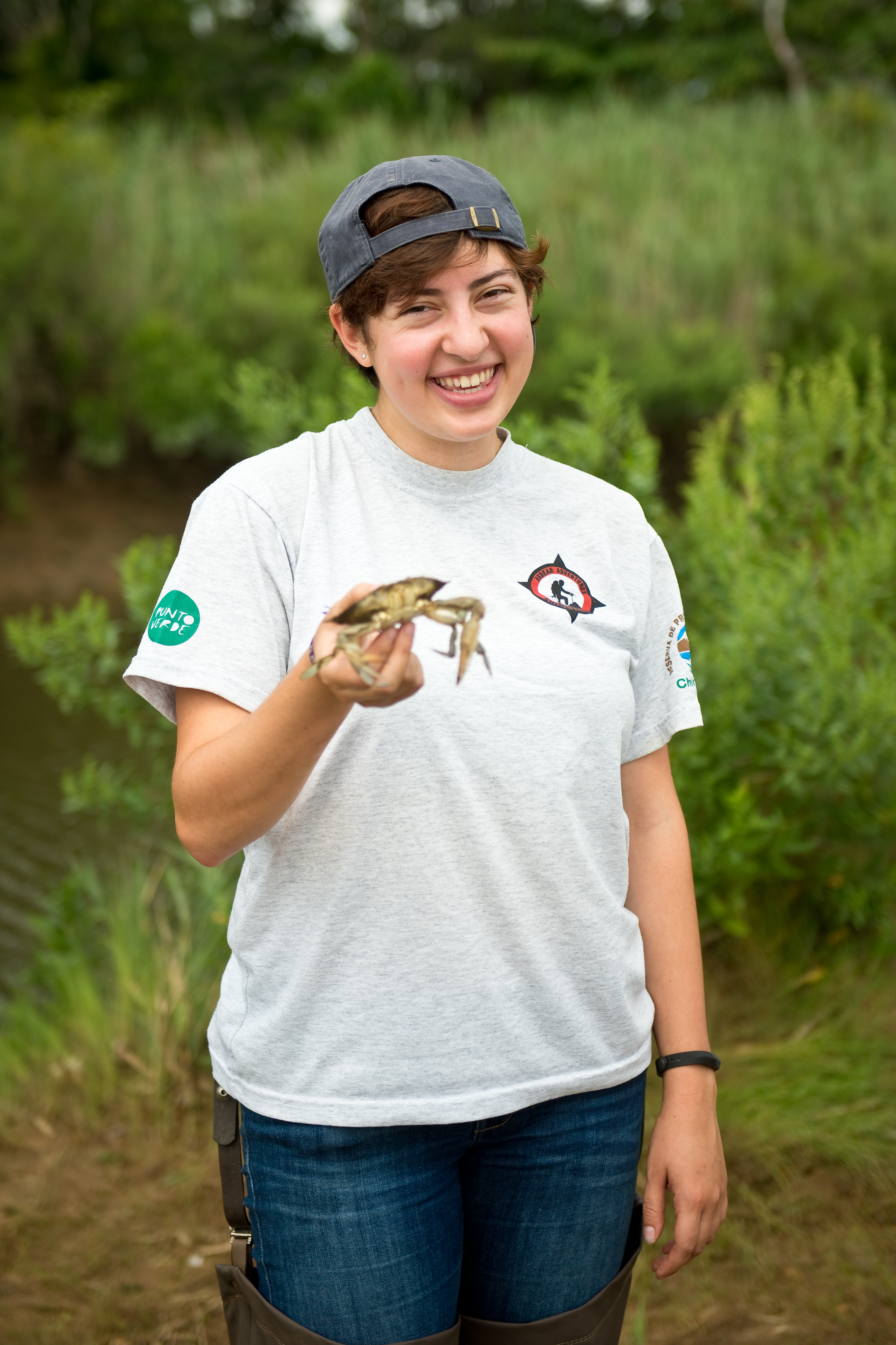
Juliana Ventresca ’18 is studying two invasive crabs in the Hudson-Raritan Bay for her honors thesis in Biology. The Chinese mitten crab (Eriocheir sinensis) and Asian shore crab (Hemigrapsus sanguineus) have been introduced to a number of estuarine and river systems outside of their natural range where they have destroyed biodiversity and economic infrastructures. As a result, their introduction to New York and New Jersey is a concern.
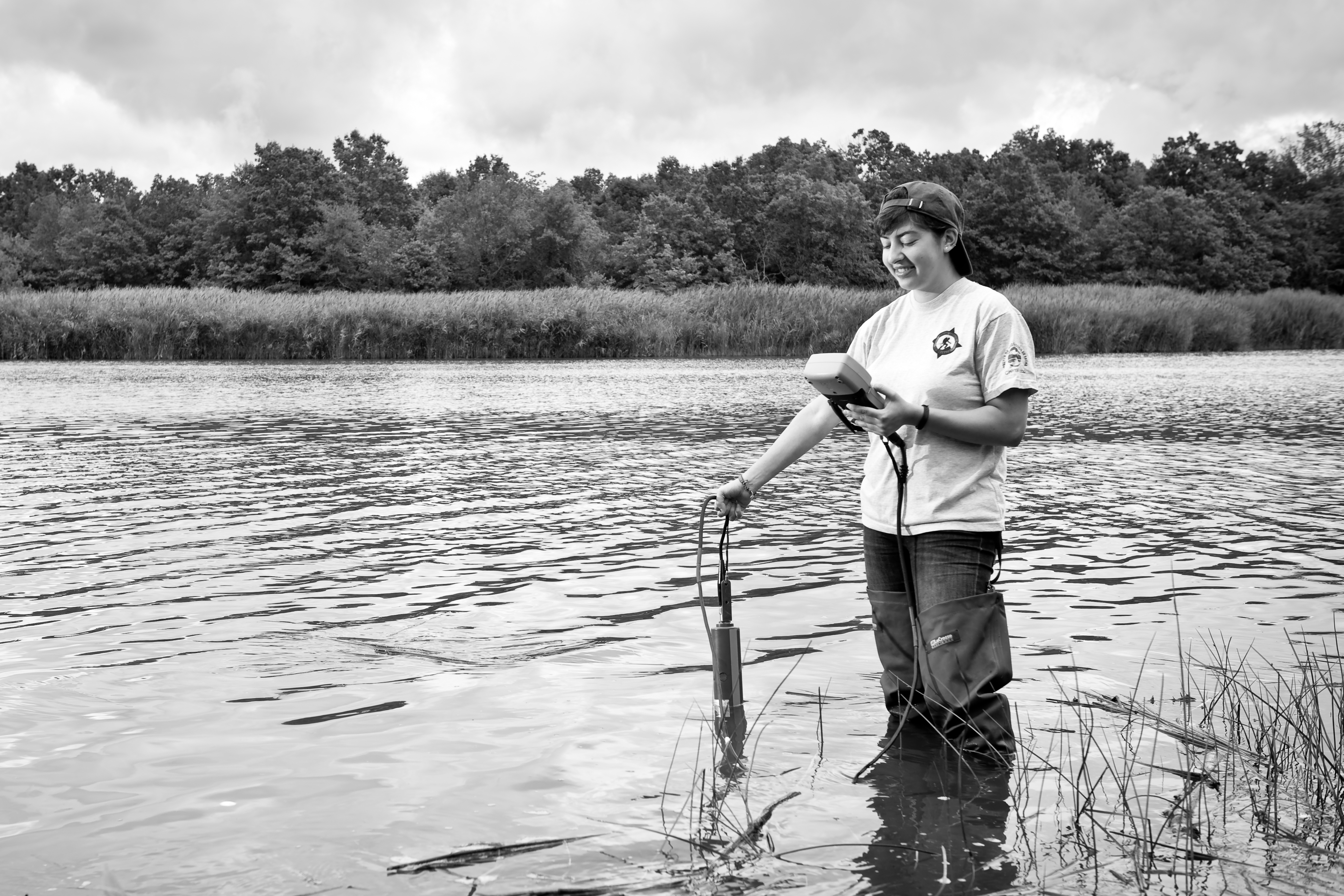
Juliana’s research addresses a number of factors interfering with the development of a more successful management plan for these two invasive species through improved monitoring efforts, development of a centralized database, and community outreach to raise awareness.
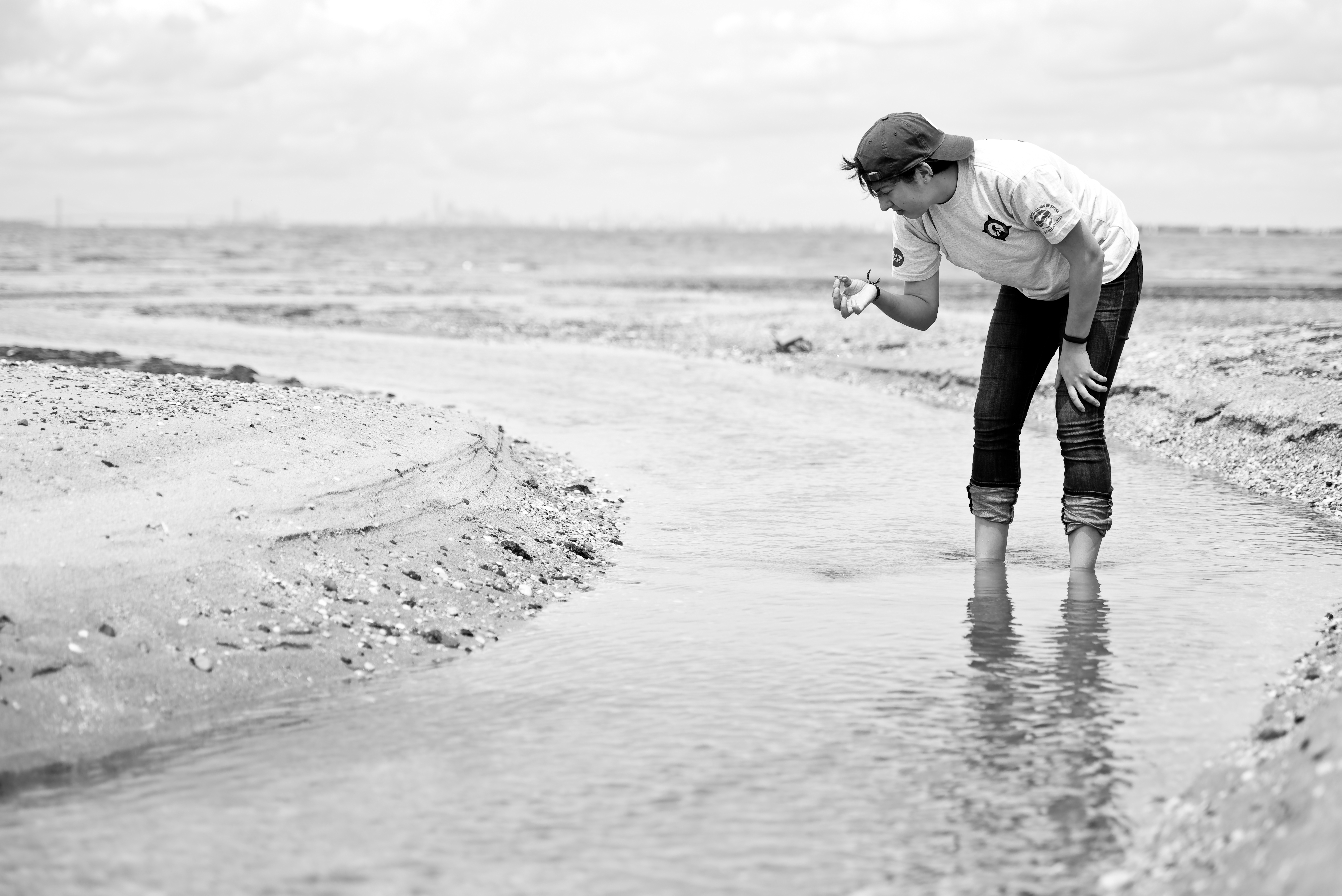
Information that we have received through interviews with anglers in the Hudson-Raritan area indicates that both the Chinese Mitten crab and Asian shore crab are seasonally abundant in tidal streams like this one – Many Mind Creek.
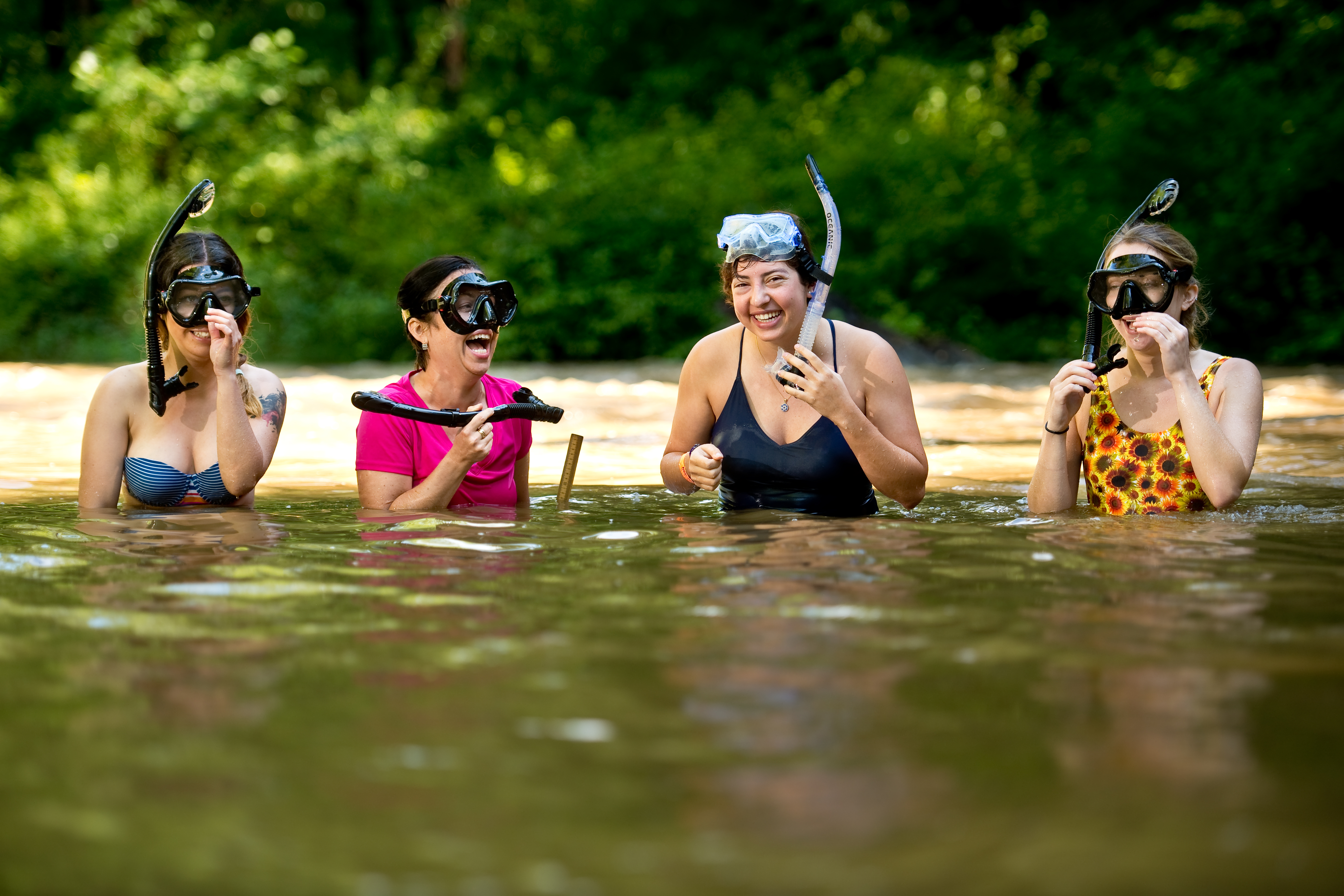
For her Honors Thesis research, Esra Demirhan ’18 (left of image) is investigating freshwater mussel abundance, diversity, and distribution prior to dam removals in Bushkill Creek. There is some concern that existing populations of mussels, some of which are federally threatened with extinction, will be harmed by sediments released through dam removal. In order to find the mussels and conserve them, we must carefully survey bottom sediments…USING SNORKELS!
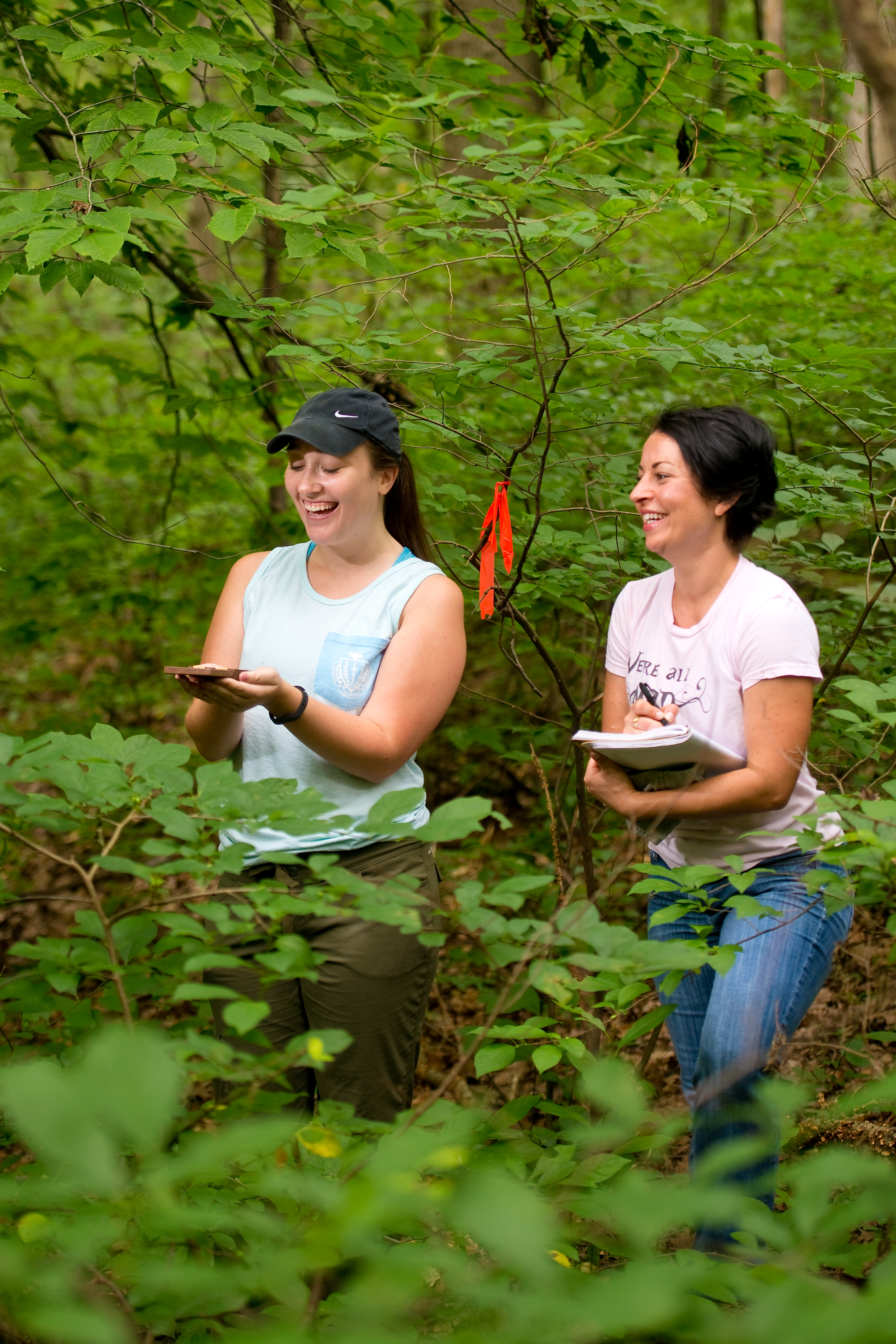
Another one of my students, Emily Lynch ’18 (left of image), is studying the impact of habitat fragmentation on terrestrial salamanders in Jacobsburg State Park. In this image, Emily is measuring canopy cover using a densiometer since we know from previous studies that salamanders tend to prefer forests with closed canopies and moist leaf litter.
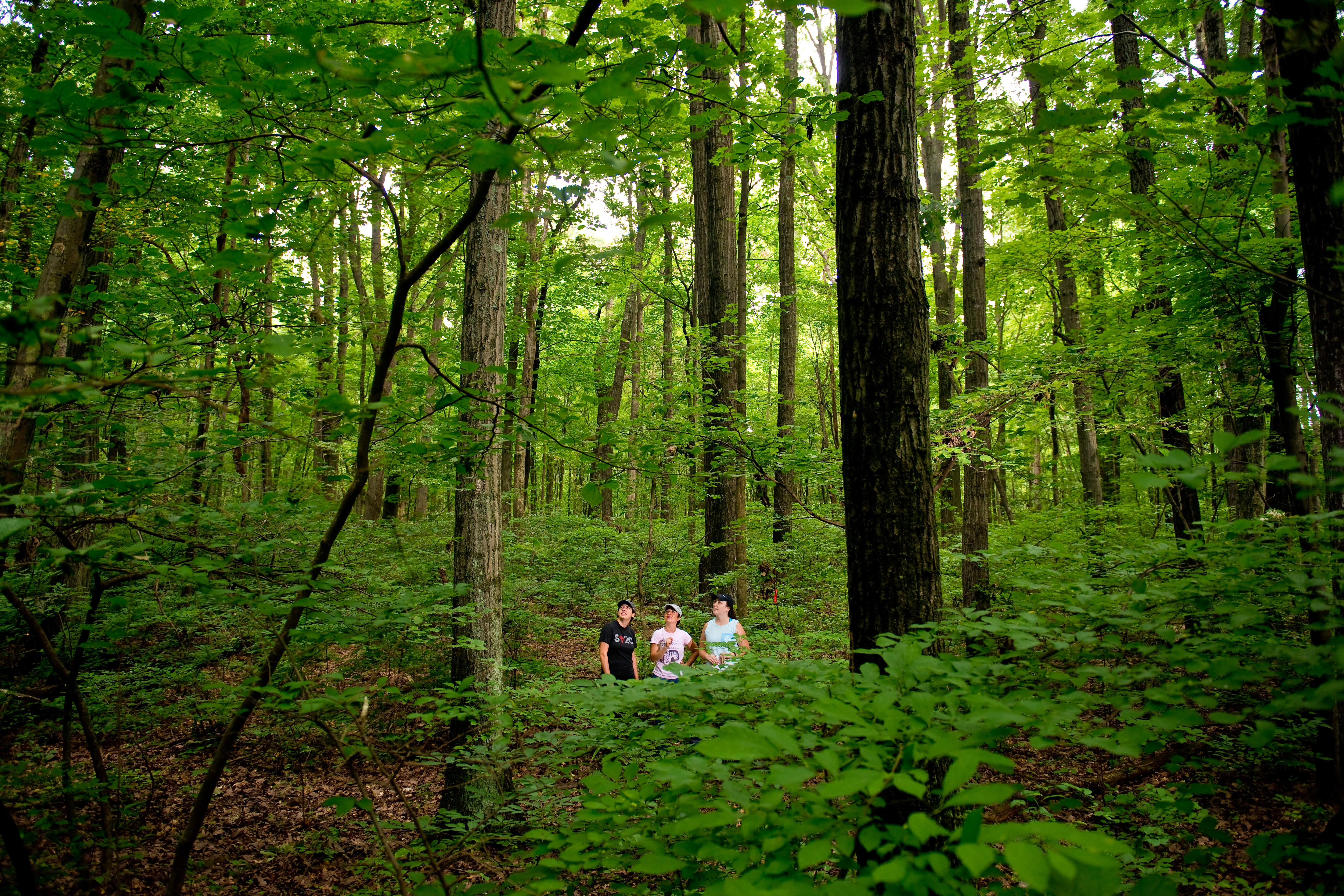
We expect the site in this image, which is in a isolated area of the park more than 1,000 meters from the nearest road, to have a greater abundance of terrestrial salamanders.
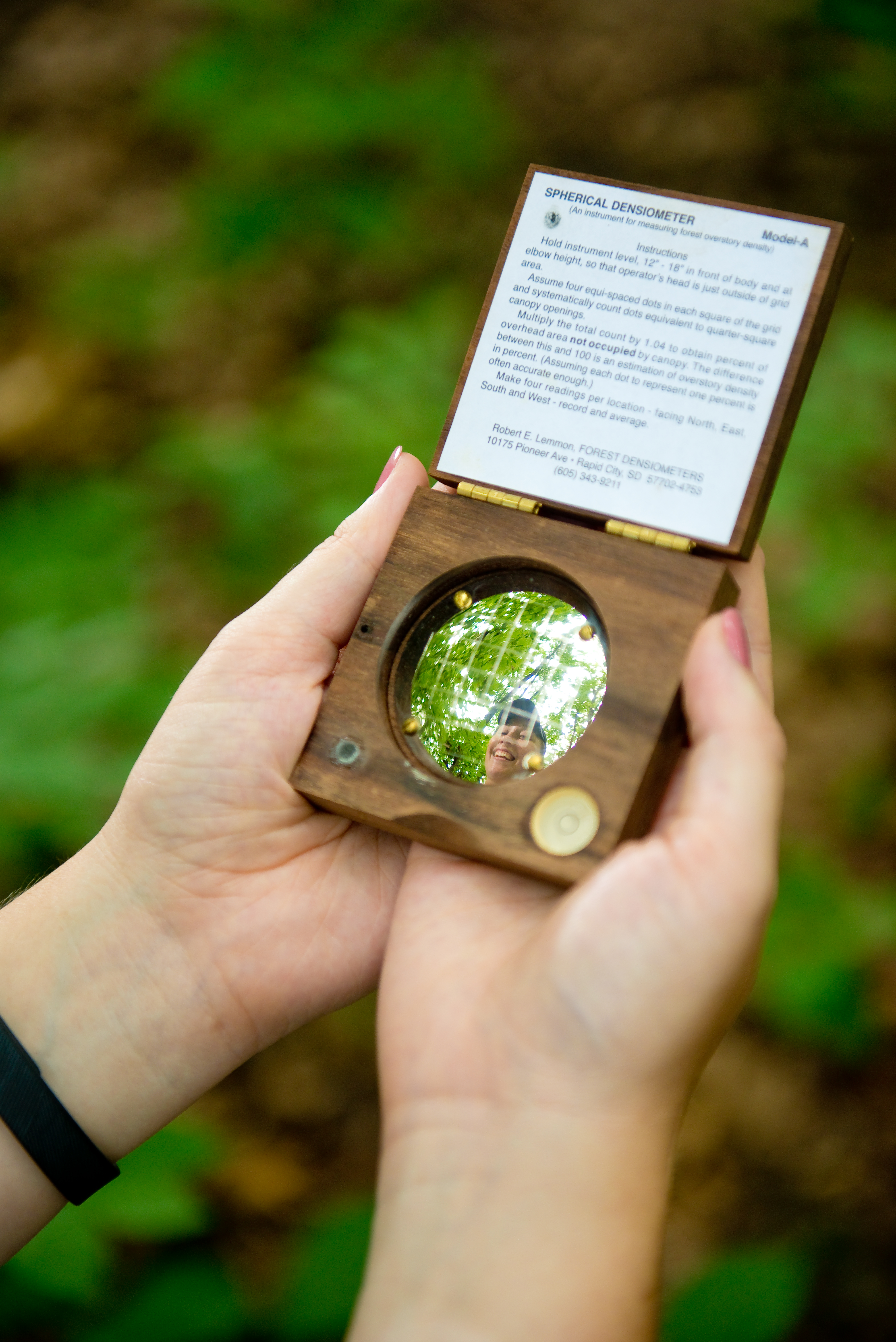
A close-up view of the densiometer, which is a mirror reflector engraved with a cross-shaped grid of 24 quarter-inch squares to delineate a plot overhead. You use the grid to estimate the proportion of the sky overhead that is under cover of the tree canopy.
PHOTO CREDIT (all photos): Bill Stank, PhotoSynthesis Photography. http://www.photosynthphoto.com/
Summer 2014 Research
Over the past 10 weeks, my summer Excel and Nalven scholars have been busy working on some exciting research projects.
Sarah Woodruff ’15 is a B.S. Biology major with a strong interest in the social sciences. She will be combining her interests in the natural and social sciences for her Honors Thesis project entitled: “Abundance, distribution, and social perceptions of two non-native crab species in the Raritan Bay System: an interdisciplinary approach to bioinvasion.” She will be not only studying the distribution of these invasive crabs, and their impact on native species, but also conducting interviews with local fishermen to assess their awareness of the problem. This aspect of her research is unique because few studies involving biological invasions delve into social perceptions of the invasive species in question. Sarah believes this is a serious oversight because humans are a critical component of food webs in most ecosystems and because the economic impacts of invasive species greatly affect the livelihood of local people. The more people are affected by an invasive species, the more they will favor management of that species. Therefore, in order to come up with a management plan for any invasive population, social perception of the biological invasion must be assessed and considered.
Katie Engberg ’15 is a B.S. Biology major interested in conservation science. As a result, Katie has decided to investigate “The Effect of Road Proximity on Abundance and Movement Patterns of Vernal Pool-Dependent Wood Frogs in Jacobsburg State Park.” Amphibians are the most threatened group of vertebrates, with about 40% at risk of extinction. Habitat loss is one of the main threats to amphibians, and of the amphibian species that populate Northeastern North America, approximately 45% rely on vernal pools as their primary breeding habitat. Katie wonders how the proximity of roads impacts water quality and amphibian abundance in these very important habitats. She has been collecting data on hydroperiod, water chemistry, egg masses, and adult frogs at 5 vernal pools within Jacobsburg State Park – 3 isolated pools and 2 near a road.
She hypothesizes that the isolated pools and pools near roads will differ in both abiotic factors and in wood frog abundance. She also hypothesizes that wood frogs will be more abundant in the isolated pools that are free from the factors that could diminish wood frog numbers, such as road mortality and habitat fragmentation. She expects that this abundance will be shown in both their egg mass numbers and numbers of captured adult wood frogs during the upland movement monitoring.
She’s only begun to collect her data, but we will keep you all posted!
“Lab Family” Members Present Research at NCUR, PAS, and LVEES
A list of conference presentations given by my students over the past year:
“Assessing the quality and availability of GIS data for point and non-point sources of nutrients and pollutants in the Raritan River Basin” by A.B. Chun* and M.B. Rothenberger. National Conference of Undergraduate Research, Ogden, UT (March 2012).
“Status and trends of macroinvertebrate communities as indicators of water quality: a tool for assessing dam removal” by C.S. Feiro* and M.B. Rothenberger. National Conference of Undergraduate Research, Ogden, UT (March 2012).
“Efficacy of Galerucella beetles as biocontrol agents of L. salicaria at Jacobsburg State Park” by S. Foye* and M.B. Rothenberger. Annual Conference of the Pennsylvania Academy of Sciences, Allentown, PA (April 2012, with published abstract).
“Plankton dynamics and eutrophication in Raritan Bay: linkages between harmful algal bloom (HAB) species and long-term nutrient enrichment” by C.D. Cabrey* and M.B. Rothenberger. Annual Conference of the Pennsylvania Academy of Sciences, Allentown, PA (April 2012, with published abstract).
“Density and distribution of the invasive Asian shore crab (Hemigrapsus sanguineus) and Chinese Mitten Crab (Eriocheir sinensis) in the Raritan River Basin” by A. Pong* and M.B. Rothenberger. Pennsylvania Academy of Sciences, Bradford, PA (April 2013).
“Density and distribution of the invasive Asian shore crab (Hemigrapsus sanguineus) and Chinese Mitten Crab (Eriocheir sinensis) in the Raritan River Basin” by A. Pong* and M.B. Rothenberger. Lehigh Valley Ecology & Evolution Symposium, Easton, PA (April 2013).
“Fifty years later: re-examining the cultural eutrophication problem in Raritan Bay” by T. Swaffield* and M.B. Rothenberger. Pennsylvania Academy of Sciences, Bradford, PA (April 2013).
“Fifty years later: re-examining the cultural eutrophication problem in Raritan Bay” by T. Swaffield* and M.B. Rothenberger. Lehigh Valley Ecology & Evolution Symposium, Easton, PA (April 2013).
“Status and trends of macroinvertebrate communities as indicators of water quality: a tool for assessing dam removal” by R. Hughes* and M.B. Rothenberger. Pennsylvania Academy of Sciences, Bradford, PA (April 2013).
“Status and trends of macroinvertebrate communities as indicators of water quality: a tool for assessing dam removal” by R. Hughes* and M.B. Rothenberger. Lehigh Valley Ecology & Evolution Symposium, Easton, PA (April 2013).
“Hydrological and biological characteristics of constructed compared with natural vernal pools” by E. Cole* and M.B. Rothenberger. Lehigh Valley Ecology & Evolution Symposium, Easton, PA (April 2013).
Galerucella Beetle Release
Shane Foye ’12 will be documenting the impact of the biocontrol beetles, Galerucella calmariensis and Galerucella pusilla on growth of L. salicaria at two wetland plots within Jacobsburg State Park. After receiving permission and permits from the state and the USDA APHIS, we released 400 beetles in the park on July 27, 2011. At one site, we will be conducting a controlled experiment and monitoring the impact of the beetles on loosestrife within enclosures (6 enclosures with and 6 enclosures without beetles), and, at the other site, we’ll be monitoring the combined impact of beetles and herbicide application.

Experimental enclosures that we will be using to monitor the impact of Galerucella beetles on purple loosestrife in Jacobsburg State Park.
CATCH OF THE DAY: AMERICAN EEL
Carly Feiro ’12, a Mellon Summer Scholar, has been collecting and identifying macroinvertebrates in the Bushkill Creek all summer as part of an interdisciplinary research project related to the removal of small dams. She typically finds a variety of insect larvae and crustaceans. However, last week, she caught an American eel in her Surber Sampler! Pretty neat. Eels are catadromous, which means that they live in freshwater habitats and spawn in marine habitats – the opposite of the more familiar Atlantic Salmon.
STILL NO SIGN OF THE CMC IN THE RARITAN
Alex and Carolyn returned from Raritan Bay this afternoon to report that we lost 7 of our 12 crab traps! Ugh! Although we caught blue crabs, spider crabs, periwinkle snails, whelk snails, shrimp, and a giant (i.e., 38 cm) horseshoe crab, we still have not seen any sign of the Chinese Mitten Crab (CMC) in the Raritan Bay. We will try again next month.
MORE RARITAN ARTWORK
Danielle Sobol ’12, an art major and summer Mellon scholar, is contributing to our Raritan Bay research project by painting a series of watercolors representing the most abundant plankton, crustaceans, and fish that we see in the Bay. Last year, she painted 10 species of phytoplankton. These paintings have been floating from the ceiling of Kunkel Hall’s sitting room since January. This summer, she painted 14 additional paintings of copepods, cladocerans, rotifers, gastropods, polychaete worms, ctenophores, and crabs as part of her Mellon-supported work. The painting on the left is the warty comb jelly (Mnemiopsis leidyii), which we find in in very high abundance in Raritan Bay in July. In fact, this past week, concentrations were around 4 organims per liter (i.e., 8 of these comb jellies in a 2-liter bottle of coke!)! The warty comb jelly is a carnivore that eats zooplankton, fish larvae and other ctenophores. The painting on the right is a copepod, which are the most abundant animals in our monthly plankton collections. Copepods are small crustaceans with more than 10,000 marine species.
Be sure to check out the rest of Danielle’s paintings in Kunkel Hall in September!
THE SEARCH FOR CHINESE MITTEN CRABS CONTINUES
Alex Pong ’13 is studying the abundance and distribution of the Chinese Mitten Crab (CMC), an invasive species, in the Raritan River Basin. Since there is very little information on New Jersey populations of this species, we have been searching in the freshwater and oligohaline segments of the river for the CMC over the past few weeks with no sightings. Yesterday, we deployed 12 traps at our 6 sampling stations in the polyhaline Raritan Bay to see what we find! I’ll keep you posted!

